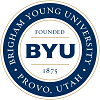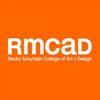The School of Arts, Humanities, and Technology (AHT) at University of Texas at Dallas (UT Dallas) has four degree options including the BA, MA, MFA, and PhD in Arts, Technology, and Emerging Communication (ATEC). A concentration in Animation and Games (A&G) is available for ATEC BA students. ATEC coursework for this option explores computer animation, motion graphics, game studies, user experience/user interface UX/UI design, and digital fabrication.
Required A&G courses include Computer Animation, Modeling and Texturing, Lighting and Composition, Rigging, Game Design, and Level Design. Students will complete 30 semester credit hours of required electives as well. Examples include Animation Lab, Procedural Animation, Motion Capture Animation. Virtual Environments, Animation Studies, Game Production Lab, and Project Management for ATEC.
ATEC MFA students may specialize in Animation, while MA and PhD students may focus their studies and research in animation, games, science and technology, or other areas. All graduate level programs provide advanced study in computer-based arts, interactive media, digital media, technology, and professional practices.
Other ATEC program highlights include guest speakers from major studios such as Disney, Pixar, and DreamWorks; applied and experimental research in collaboration with instructors in varying areas of expertise; seminars and lectures presented by industry professionals; and portfolio and project-based exercises.
ATEC students have access to the following labs and studios: 3D Studio, ArtSciLab, Creative Automata Lab, Cultural Science Lab, Emerging Gizmology Lab, Fashioning Circuits, LabSynthE, Narrative Systems Research Lab, Public Interactives Research Lab (PIRL), SP&CE Media, and The Studio for Mediating Play. Students focusing in animation also have access to the ATEC Animation Lab, which provides the opportunity to participate in a simulated animated studio experience. Over two semesters, a crew of 40 students will write, design, direct, and produce a two-minute CG animated short film. Just a few past films include Bad Timing (2022), Octo Ninja (2021), Night Shift (2020), and Stargazer (2019).
Graduates of the ATEC programs at UT Dallas are prepared to seek careers in 3D computer animation, film and television, games, modeling and simulation, virtual environments, and medical and scientific visualization.
University of Texas at Dallas opened in the 1960s as the Graduate Research Center of the Southwest. Established by the owners of Texas Instruments, UT Dallas is an official member of the University of Texas System. The school serves 31,570 students enrolled in more than 140 degree programs across eight schools. University of Texas at Dallas is accredited by the Southern Association of Colleges and Schools Commission on Colleges (SACSCOC).












